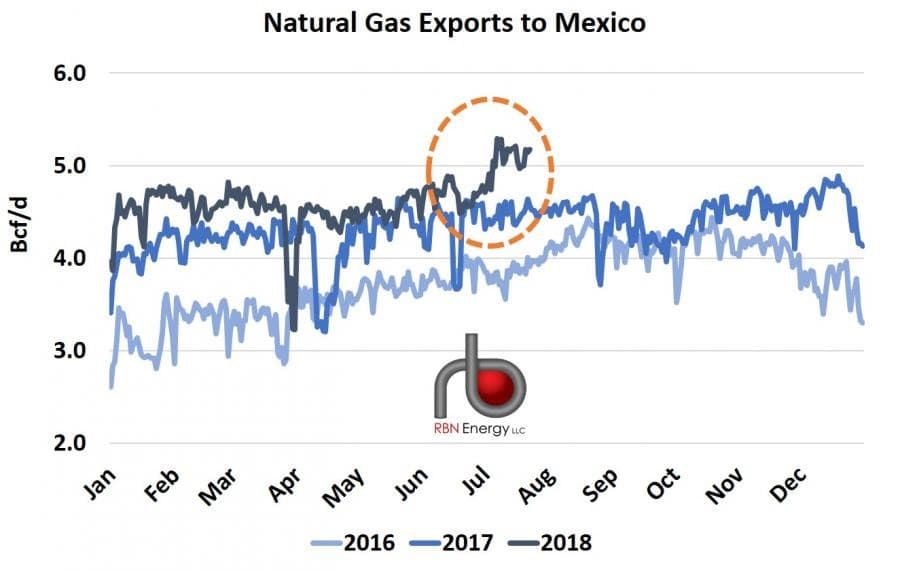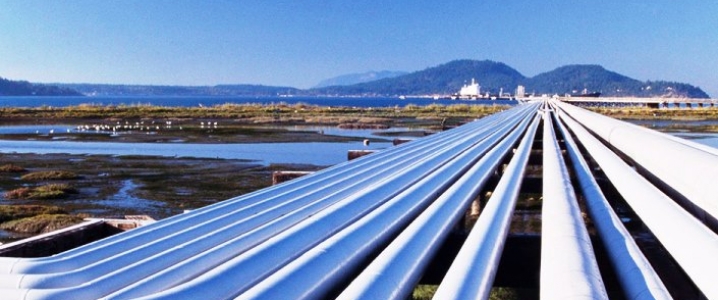Data from the 2018 BP Statistical Review of World Energy show that last year the U.S. maintained a healthy lead as the global natural gas powerhouse.
In 2017, the U.S. produced an average of 71.1 billion cubic feet per day (Bcf/d) of natural gas. That’s a 1.0 percent increase from 2016 production, but not quite good enough to beat the 2015 record of 71.6 Bcf/d.
That was still good enough for a 20.0 percent share of the world’s total natural gas production.
Shale Gas Puts U.S. Back on Top
To put the U.S. production numbers in perspective, natural gas production for the entire Middle East was 63.8 Bcf/d. Russia, in second place among countries, saw its natural gas production surge by 8.2 percent, but at 61.5 Bcf/d that was still well behind the U.S.

(Click to enlarge)
Natural gas production 1970-2017
The U.S. had dominated global natural gas production until the 1980s, at which time it ceded the lead to Russia. The Middle East has grown its natural gas production at a much faster rate over the past 50 years, though, and is on pace to take the lead during the next decade.
Related: Bypassing The World’s Key Oil Chokepoints
U.S. natural gas production had been in decline until the fracking boom that began in the middle of the previous decade. Production grew in the U.S. by an astounding 51 percent from 2005 to 2015, which pushed the U.S. back into the global lead.
U.S. consumption has also grown rapidly as power plants have turned increasingly to natural gas as both a replacement for coal-fired power, and a backup for new renewable capacity.
U.S. Gas Exports are Surging
Another important outlet for U.S. natural gas production has been exports, both via pipeline and as liquefied natural gas (LNG). LNG exports from the U.S. reached 1.7 Bcf/d in 2017, equivalent to about 2.4 percent of U.S. natural gas production. Mexico received nearly 22 percent of these exports, while the Asia Pacific region received 41 percent.
Pipeline exports amounted to 6.3 Bcf/d, or 8.9 percent of U.S. daily production. Despite trade war rhetoric, Mexico remains the most important destination for U.S. natural gas exports, receiving 64 percent of the total.
Related: Are Oil Markets Underestimating Iran’s Threats?
Further, exports to Mexico continue to grow rapidly. Last week RBN Energy reported that in early July, pipeline exports to Mexico breached 5.0 Bcf/d for the first time ever.

(Click to enlarge)
U.S. natural gas exports to Mexico.
ADVERTISEMENT
Reserves Signal a Warning
The U.S. may continue to lead the world in natural gas production for a few more years, but the level of proved natural gas reserves implies that our lead could be short-lived.
The Middle East’s proved natural gas reserves at the end of 2017 were 2.8 quadrillion cubic feet, nearly ten times U.S. proved reserves of 309 trillion cubic feet. For perspective, U.S. proved reserves are only 4.5 percent of the global total.
Russia has more proved natural gas reserves than any other country with 1.23 quadrillion cubic feet, followed by Iran with 1.17 quadrillion cubic feet. Total proved natural gas reserves at the end of 2017 were enough to satisfy 2017 global production rates for 52.6 years.
By Robert Rapier
More Top Reads From Oilprice.com:
- Why All The Experts Disagree On Oil Prices
- The 4 Key Chokepoints For Oil
- The Most Important Waterway In The Oil World


















